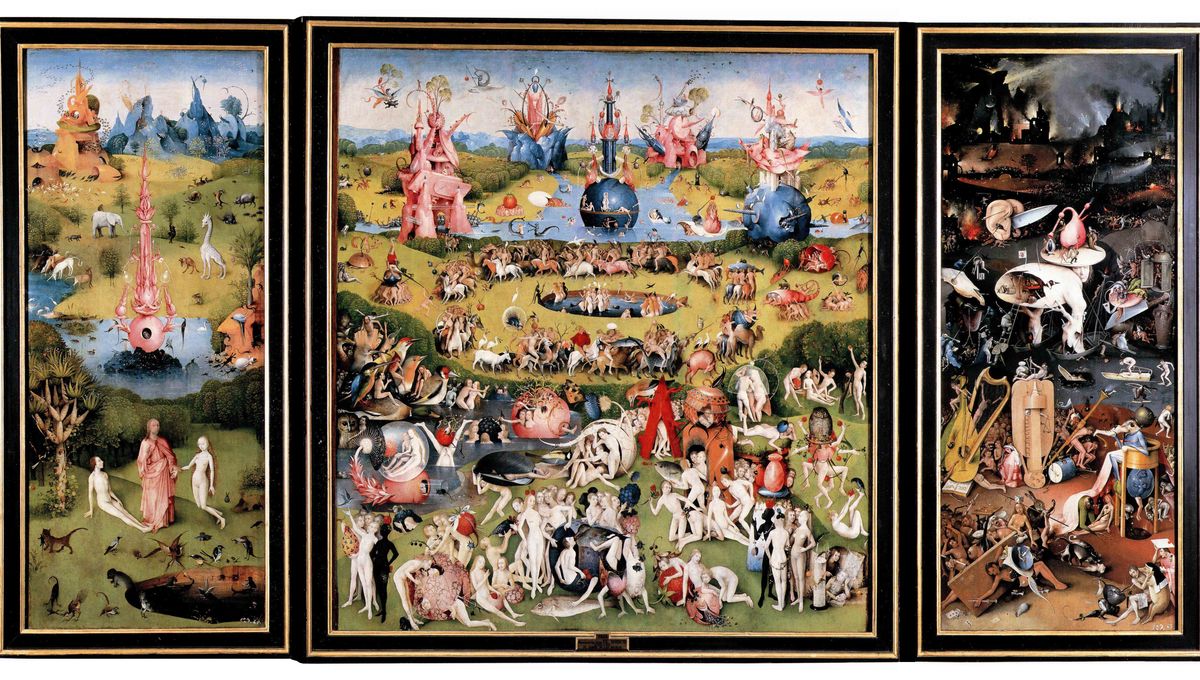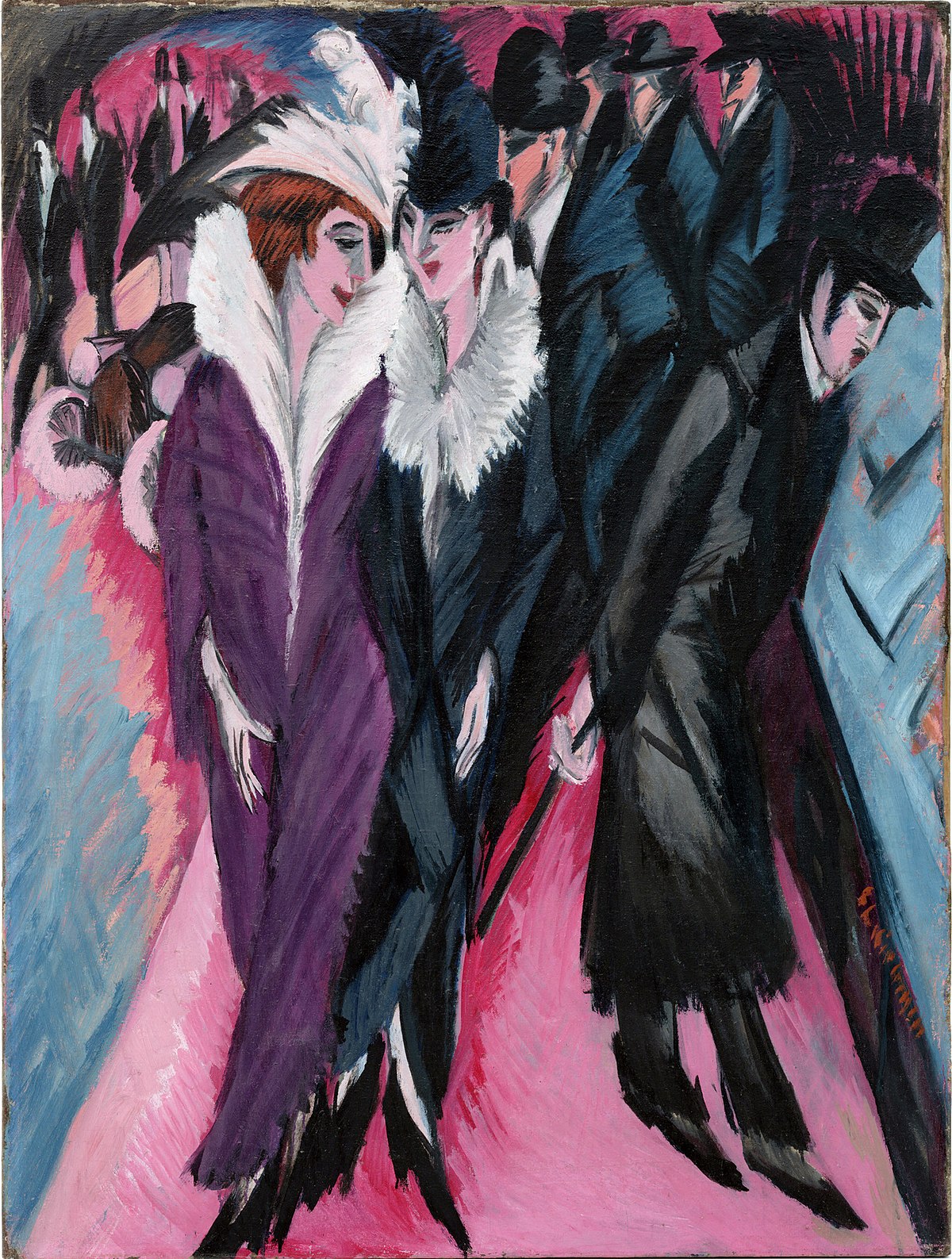
Spotted for you in ARTS KNOWLEDGE

Images of the Apocalypse
on the occasion of the major exhibition Apocalypse hier et demain at the Bibliothèque nationale de France (from February 4 to June 8)
The word of Greek origin "apocalypse" very early on, in Jewish and Christian cultures, saw its meaning of "unveiling", "revelation" take second place to become synonymous with the couple "annihilation", "renewal". The apocalyptic stories thus follow that of the destruction of the temple of Jerusalem and the exile in Babylon. They find their canonical form in the seven visions of the Apocalypse of John. These "pictures" crossed with those of the Apocalypse according to Matthew and other apocryphal apocalypses not retained by the church, give rise to a vision widely spread in the Christian world of the Last Judgment and hell. An apocalyptic art was thus born towards the end of the 4th and the beginning of the 5th century. The motifs are reduced to symbolic figures in Roman mosaics. But medieval miniaturists do not hesitate to illustrate all of John's descriptions. From the four living beings, man, lion, bull, eagle, to the four horsemen, including the angels sounding their trumpets and the sword coming out of Christ's mouth. It is from Spain and the illustration of the Apocalypse by the monk Beatus of Liebana that the most striking imagery of the period spread. Crossed with oriental sources, it is at the origin of the illustrations of the tympanum of the abbey of Saint-Pierre de Moissac. Also belonging to this founding tradition is the Beatus of the Gascon abbey of Saint-Sever. It is since this time that divine angels have been represented with bird wings. While his angels are devoid of them and are depicted naked, Satan is depicted as a character with a hideous face, dark skin with disproportionate hands and feet. Here we find the representation of the hereditary enemy from the south widespread in the Egypt of the Pharaohs. And if the prince of darkness wears wings in medieval iconography, they are bat wings with hairy limbs, horns or pointed ears. Moreover, there is no hell without flames. If images of various tortures by fire abound in the Christian Middle Ages, the latter does not have a monopoly on them by far. Several terms designating hell in the Koran are thus synonyms for fire. And tortures by flame are also found in the twenty-one Hindu hells and in eight of the sixteen hells of the cosmology of Tibetan Buddhism. Medieval illuminators also popularized the figure of the Leviathan, whose incandescent maw represented the gates of hell. Depicted in Lucas of Leiden's Last Judgment, it also appears in Dürer's mythical Four Horsemen of the Apocalypse. The sophistication of torture is raised even higher in Hieronymus Bosch's Garden of Earthly Delights. As trivial as they may seem to us today, medieval demonic figures seemed frightening at the time in an era obsessed with death, war, plague and famine. After a two-century eclipse during the Enlightenment, the figure of the demon resurfaced in all its bestiality with dark romanticism. But it is a Satan all the more troubling because he is almost human except for his wings and claws that Delacroix painted to illustrate Goethe's Faust. The devil would never leave the forefront. A wingless beast with a human gaze in Füssli, he becomes a dancer riding a melee of naked bodies of the damned intertwined in Jean Delville's Treasures of Satan. The door is thus open to all the representations of the filthy beast that the horror films of our modernity will propose. The theme of war is often merged with the satanic figure. From the War of Douanier Rousseau, appearing in the guise of a horseman of the apocalypse, to the photographic images of Auschwitz, Hiroshima or Chernobyl. The Apocalypse is no longer a fiction of religious essence to which its representation gives life, it has become an atheist reality to which art has only to bear witness.
Illustration: Garden of Earthly Delights by Hieronymus Bosch (1490-1510)

Demonized Images
on the occasion of the work of memory of the Musée national Picasso-Paris on the exhibition Degenerate Art organized in Munich in 1937 entitled Degenerate Art: The Trial of Modern Art under Nazism (from February 18)
The bodies that burn in hell find an echo almost as sinister in the auto-da-fés of modern works of art deemed degenerate by the Nazi regime in 1936. A frustrated painter, Hitler hated the avant-garde that his ideologues went so far as to equate with a mental illness. They were able to rely on the work entitled Degeneration written by Max Nordau in 1892 as well as on Art and Race published by Paul Schultze-Naumburg and the Sanitation of the Temple of Art by Wolfgang Willrich published in 1937. All to arrive at a definition of pure art of German race. Examples not to follow included Van Gogh's Arlesienne and Picasso's Femme s'esseutant les pieds. The result of this banishment is impressive: no fewer than one thousand four hundred artists were insulted, subjected to vindictiveness, dismissed from teaching positions, banned from exhibiting, physically threatened or forced into exile between 1933 and 1945. And some twenty thousand works were taken down, confiscated, destroyed or subjected to defamatory exhibitions called "exhibitions of shame", the most sinisterly famous example of which will remain "Degenerate Art". In this carnage, works by expressionist, dadaist, surrealist, cubist, fauve or simply modern artists miraculously survived a few dozen paintings, thirty of which are today brought together by the Musée national Picasso-Paris. But many paintings were not so lucky, which had dire consequences such as the suicide in 1938 of the painter Ernst Ludwig Kirschner, co-founder of the Die Brücke group who had donated nearly a thousand paintings to German museums. Naturally, it was Jewish artists such as Marc Chagall, Hans Ludwig Katz, Jankel Adler, Ludwig Meiner or Otto Freundlich who suffered the most virulent attacks, the latter having been deported and murdered in Sodibor. Ahead of their time in their art, the painters persecuted by the National Socialist power thus also sadly paved the way for the massacre of a large part of their public.
Illustration: The Street by Ernst Ludwig Kirschner (1913)






































































